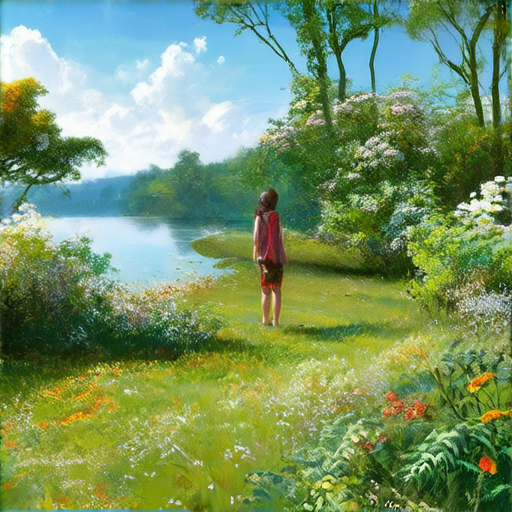Unlocking the secrets of the creative process has long been a coveted goal for artists, entrepreneurs, and innovators alike. At its core, the creative process is a complex and multifaceted journey that involves a series of interconnected stages, each one building upon the last to produce something truly original and innovative. From the initial spark of inspiration to the final polished product, understanding the creative process can help individuals tap into their full potential, overcome creative blocks, and bring their most ambitious ideas to life.

The 5 Stages of the Creative Process
As a creative individual, understanding the stages of the creative process can help you unlock your full potential and bring your ideas to life.
-
Stage 1: Incubation
This stage involves allowing yourself to relax and let your mind wander, often unconsciously processing information and making connections between seemingly unrelated concepts.
During incubation, it’s essential to give yourself permission to daydream and explore new ideas without judgment.
-
Stage 2: Preparation
In this stage, you’ll begin to gather information, conduct research, and prepare yourself for the creative task ahead.
This might involve reading books, watching videos, or attending workshops to gain knowledge and skills necessary for your project.
-
Stage 3: Inspiration
Inspiration strikes when you’re exposed to something that sparks creativity and ignites passion within you.
This could be a conversation with someone, a beautiful sunset, or a piece of art that resonates with you.
-
Stage 4: Ideation
In this stage, you’ll start generating ideas and exploring different possibilities for your project.
This might involve brainstorming sessions, mind mapping, or freewriting to get your thoughts down on paper.
-
Stage 5: Implementation
Finally, it’s time to take action and bring your idea to life.
This stage requires discipline, hard work, and a willingness to learn and adapt as you navigate the challenges of bringing your vision to reality.
By understanding and embracing these five stages of the creative process, you’ll be better equipped to tap into your full potential and create something truly remarkable.
The Creative Process
The creative process is a complex and multifaceted phenomenon that has been studied and debated by scholars, artists, and innovators for centuries.
- Definition: The creative process refers to the cognitive, emotional, and behavioral processes involved in generating novel and valuable ideas, products, or solutions.
- Steps: While there is no one-size-fits-all approach to the creative process, most models involve several stages, including incubation, ideation, prototyping, testing, and refinement.
- Benefits: Engaging in creative activities can have numerous benefits, including improved problem-solving skills, increased innovation, enhanced self-expression, and boosted confidence.
- Tips: To foster creativity, try setting aside dedicated time for brainstorming, exploring new experiences, and embracing failure as a learning opportunity.
Understanding the Creative Process
To tap into your full creative potential, it’s essential to understand the underlying psychological, social, and cultural factors that influence the creative process.
- Cognitive Factors: Research suggests that creativity is closely tied to cognitive abilities such as divergent thinking, working memory, and executive functions.
- Emotional Factors: Emotions play a significant role in the creative process, with feelings of excitement, curiosity, and motivation often driving innovative thinking.
- Social Factors: Collaboration and social interaction can stimulate creativity, as individuals bring diverse perspectives and expertise to the table.
- Cultural Factors: Cultural norms, values, and traditions can shape the creative process, influencing what is considered acceptable or desirable.
Fostering Creativity
To cultivate creativity, try incorporating the following strategies into your daily routine:
- Practice Mindfulness: Regular mindfulness practice can help quiet the mind, increase focus, and enhance cognitive flexibility.
- Engage in Novel Experiences: Exposure to new environments, people, and activities can stimulate the brain and foster creative thinking.
- Take Breaks and Allow Incubation: Giving yourself time to relax and recharge can allow ideas to percolate and emerge in unexpected ways.
- Seek Out Feedback and Criticism: Constructive feedback can help identify blind spots, refine ideas, and accelerate the creative process.
Conclusion
The creative process is a dynamic and multifaceted phenomenon that requires a deep understanding of cognitive, emotional, social, and cultural factors.
By embracing the complexities of creativity and incorporating strategies to foster innovation, you can unlock your full potential and develop a more nuanced appreciation for the creative process.

The 7 Steps of the Creative Process
As an artist and creative, understanding the 7 stages of the creative process can help you navigate your projects with ease and confidence.
-
Step 1: Intending
This is the initial stage where you define your project’s purpose, goals, and scope. Take time to brainstorm and clarify your vision.
For example, I often start by asking myself questions like “What inspires me?” or “What do I want to express through my art?”
-
Step 2: Incubating
In this stage, you allow yourself to relax and let your subconscious mind work its magic. Give yourself permission to daydream and explore new ideas.
I find that taking long walks or practicing meditation helps me tap into my creative potential during this stage.
-
Step 3: Investigating
Now it’s time to gather information and research your project’s theme, style, and techniques. Read books, watch videos, and talk to experts in your field.
When researching, I like to take notes and organize my findings in a way that makes sense to me.
-
Step 4: Composing
This stage involves bringing together all the elements you’ve gathered and starting to create your final piece. Experiment with different materials and techniques until you’re satisfied with the result.
During composition, I often find myself making adjustments and refining my ideas until everything feels cohesive and polished.
-
Step 5: Deepening
In this stage, you refine and perfect your work, paying attention to details and nuances that enhance the overall impact of your piece.
When deepening my work, I focus on adding layers of meaning and symbolism that resonate with my audience.
-
Step 6: Completing
This final stage involves completing your project and preparing it for sharing with others. Make sure everything is polished and ready for presentation.
When completing my projects, I always take a step back to admire my finished work and feel a sense of pride and accomplishment.
-
Step 7: Going Public
This last stage involves sharing your completed project with the world. Whether it’s through exhibition, publication, or online platforms, make sure you’re prepared to showcase your work and receive feedback.
When going public, I try to stay open-minded and receptive to constructive criticism, using it as an opportunity to grow and learn.
By following these 7 steps, you’ll be well on your way to creating meaningful and impactful art that resonates with your audience.

The 4 Steps of the Creative Process
As a creative individual, understanding the creative process can help you unlock your full potential and bring your ideas to life.
-
Preparation
This stage involves gathering information, researching, and planning your project. It’s essential to define your goals, identify your target audience, and determine the resources needed to complete your project.
- Define your goals and objectives
- Identify your target audience
- Determine the resources needed
-
Incubation
This stage involves taking a step back and allowing yourself time to reflect on your ideas and gather inspiration. It’s during this stage that your subconscious mind starts to work on finding solutions to the challenges you’re facing.
- Take a break and allow yourself time to relax
- Engage in activities that stimulate your creativity
- Seek out new experiences and inspiration
-
Illumination
This stage involves having an epiphany or a moment of insight where you suddenly understand how to solve a problem or overcome a challenge. It’s often accompanied by a sense of excitement and enthusiasm.
- Pay attention to your intuition and instincts
- Be open to new ideas and perspectives
- Don’t be afraid to take risks and try new things
-
Verification
This final stage involves testing and refining your idea to ensure it meets your goals and objectives. It’s essential to gather feedback from others and make adjustments as needed.
- Gather feedback from others
- Make adjustments and refinements
- Test and evaluate your idea
By following these four stages, you’ll be able to tap into your creative potential and bring your ideas to life. Remember to stay flexible and adapt to changes along the way, and don’t be afraid to seek out new inspiration and guidance when needed.
The 4 Cs of Creative Thinking
Creative thinking is a crucial skill for artists and creatives alike, allowing us to approach problems from unique angles and find innovative solutions.
- Critical Thinking: Critical thinking is the process of carefully analyzing information to better understand it. As artists, we need to be able to critically evaluate our own work and the work of others, considering factors such as composition, color palette, and overall impact.
- Collaborating: Collaboration is essential for creatives, as working with others can bring fresh perspectives and ideas to the table. By sharing our expertise and experiences, we can create something truly remarkable.
- Communicating: Effective communication is key to conveying our ideas and vision to others. As artists, we need to be able to articulate our thoughts and feelings through words, images, and other forms of expression.
- Creating: Creating is the heart of what we do as artists. It involves bringing our ideas to life through various mediums, such as painting, drawing, sculpture, or digital art. By embracing our creativity, we can tap into our imagination and produce original works that reflect our unique perspective.
By incorporating these four C’s into our creative practice, we can unlock our full potential and produce work that inspires and resonates with others.
Putting the 4 Cs into Practice
- Develop Your Critical Thinking Skills: Take the time to analyze your own work and the work of others, considering factors such as composition, color palette, and overall impact.
- Foster Collaborative Relationships: Seek out opportunities to work with other creatives, sharing your expertise and experiences to create something truly remarkable.
- Improve Your Communication Skills: Develop your ability to articulate your thoughts and feelings through words, images, and other forms of expression.
- Nurture Your Creativity: Make time to explore new mediums and techniques, embracing your imagination and producing original works that reflect your unique perspective.
By putting the 4 Cs into practice, you’ll be well on your way to unlocking your full creative potential and producing work that inspires and resonates with others.

The Creative Process Flow
As an artist and creative, understanding the creative process flow is essential to unlocking your full potential and producing high-quality work.
-
Step 1: Inspiration
Find inspiration in various forms, such as nature, people, books, or experiences. Take note of what sparks your creativity and how you can incorporate those elements into your work.
-
Step 2: Idea Generation
Brainstorm and explore different ideas based on your inspiration. Ask yourself questions like “what if,” “why not,” and “how can I.” Write down as many ideas as possible, no matter how crazy or impractical they may seem.
-
Step 3: Research and Planning
Research and gather information about your idea. Read books, watch videos, talk to experts, and conduct experiments to gain a deeper understanding of your concept. Create a plan and outline your project, breaking it down into manageable tasks and deadlines.
-
Step 4: Concept Development
Refine your idea and develop a solid concept. Consider factors like target audience, budget, and resources. Create prototypes, sketches, or mockups to visualize your idea and identify potential issues.
-
Step 5: Creation
Start bringing your concept to life. Use your skills and talents to create something unique and meaningful. Don’t be afraid to take risks and try new things – it’s often the most innovative solutions that come from experimentation.
-
Step 6: Refinement and Iteration
Review and refine your work, making adjustments as needed. Seek feedback from others and be open to constructive criticism. Iterate on your design until you’re satisfied with the final result.
-
Step 7: Launch and Promotion
Share your creation with the world! Develop a marketing strategy to promote your work, whether through social media, advertising, or networking events. Be prepared to adapt and adjust your approach as needed.
-
Step 8: Evaluation and Reflection
Assess the success of your project and reflect on what worked well and what didn’t. Identify areas for improvement and apply those lessons to future projects. Celebrate your achievements and learn from your mistakes.
-
Step 9: Continuous Learning and Growth
Stay curious and keep learning. Attend workshops, conferences, and online courses to stay up-to-date with the latest trends and techniques. Experiment with new tools and software to expand your skillset.
-
Step 10: Community Engagement
Connect with fellow creatives and engage with your community. Share your knowledge and expertise, offer feedback and support, and participate in collaborative projects. Building relationships and networks can lead to new opportunities and growth.

0 Comments